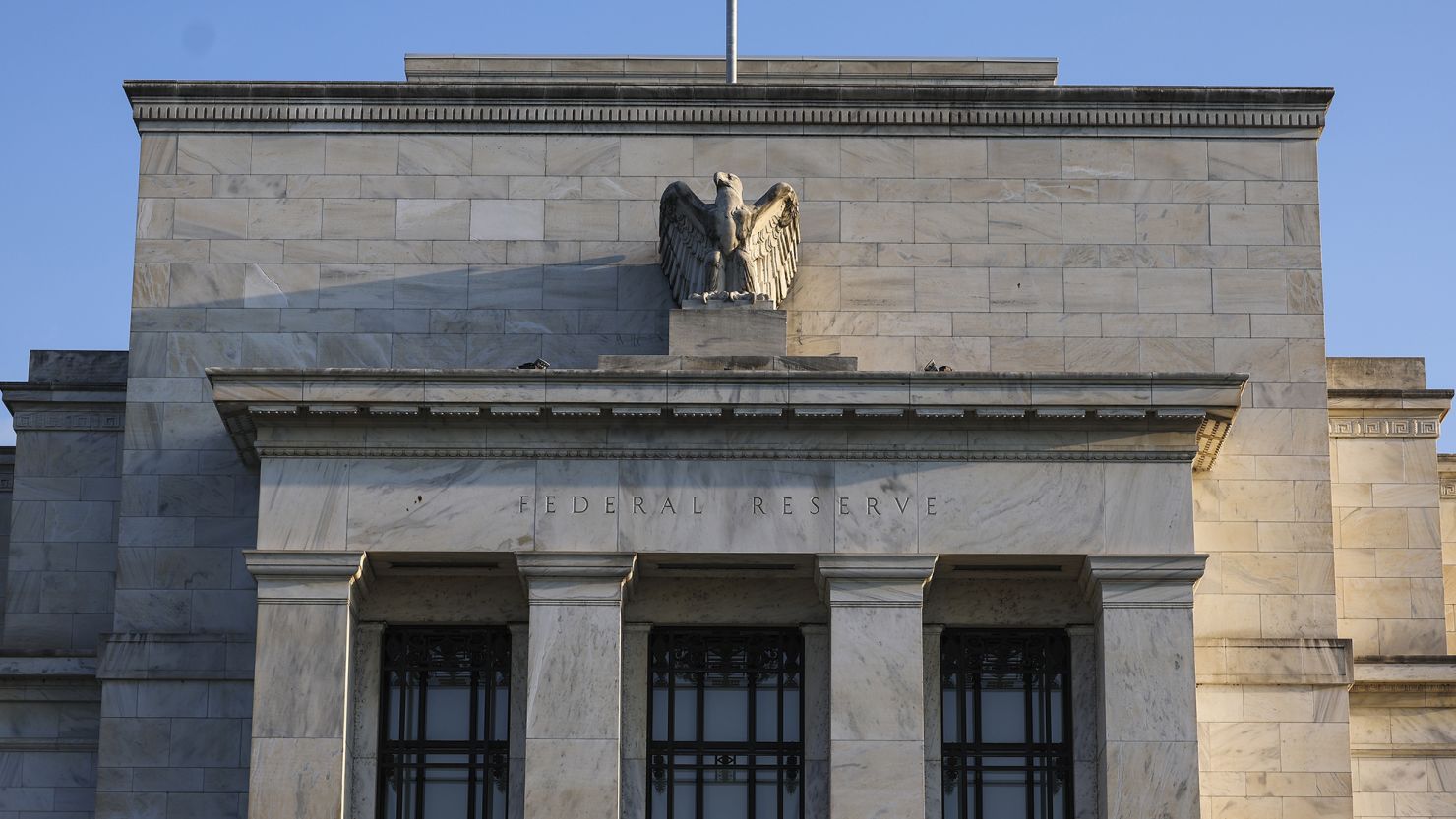The Federal Reserve held interest rates steady Wednesday for the second consecutive meeting, leaving the central bank’s benchmark lending rate at its highest level in 22 years.
Economists and financial markets had expected the pause in the Fed’s aggressive rate-hiking campaign, after several Fed officials signaled they anticipate a further slowing of the US economy as it continues to absorb the effects of higher borrowing costs.
The Fed’s post-meeting statement noted that “economic activity expanded at a strong pace in the third quarter” — a recent development that has puzzled some economists.
Despite the Fed aggressively raising interest rates 11 times since March 2022 in a bid to combat inflation, the US economy has not only avoided a recession so far, but instead expanded at a blistering 4.9% annualized rate in the third quarter, mostly due to solid consumer spending.
The importance of bond yields
The economy’s surprising resilience is one reason behind the recent run-up in bond yields, with the benchmark 10-year US Treasury yield hovering near the 5% threshold — though it dipped below 4.8% Wednesday morning after the Treasury Department said it would auction a slightly smaller amount of debt than investors expected.
Fed Chair Jerome Powell said in his post-meeting news conference that the central bank is keeping a close eye on soaring bond yields, which “could matter for future rate decisions.”
“Financial conditions have tightened significantly in recent months,” Powell said. “Because persistent changes in financial conditions can have implications for the path of monetary policy, we monitor financial developments closely.”
While inflation has retreated markedly from its four-decade peak last summer, it remains above the central bank’s 2% target. A red-hot economy could make the proverbial final mile of the Fed’s historic inflation fight more difficult, and possibly undo some of the welcome progress it has seen over the past year. But it’s unlikely that the third quarter’s robust economic strength will persist, simply because it was an anomaly. In the five years ahead of the Covid-19 pandemic, from 2014 to 2019, GDP growth averaged 2.6%, according to Commerce Department data.
US stocks jumped higher on Wednesday afternoon with the Dow rising 221 points, or 0.7%; the S&P 500 hitting a session high, up 1.1%; and the tech-heavy Nasdaq Composite 1.6% higher.
Looking for ‘below-trend growth’
Fed officials have said they need to see consistent “below-trend growth” to ensure that inflation is on track to 2%, since red-hot demand could be maintaining some upward pressure on prices.
“Everyone’s been very gratified to see that we’ve been able to achieve pretty significant progress on inflation without seeing the kind of increase in unemployment that has been very typical of a rate-hiking cycle like this one,” Powell said.
The Fed chief stressed that it “is still likely to be true, not a certainty, but likely” that the central bank would need to see weaker growth and a softer job market to “fully restore price stability.” It’s unclear if inflation can continue to slow without those two areas showing a consistent slowdown. Defeating inflation without a sharp rise in unemployment would be known as a “soft landing” — and some officials are hopeful for that outcome.
The good news for the Fed is that the economy is widely expected to lose some steam under the weight of higher borrowing costs due to elevated yields, tighter budgets due to the resumption of student loan repayments, depleted pandemic savings and other economic hurdles Americans are facing.
For now, the bond-market rout is playing an important role in cooling the economy, according to public remarks from several Fed officials. The Fed’s several past policy statements have all mentioned that tighter credit conditions will likely weigh on both inflation and the broader economy, but Wednesday’s statement included “financial” conditions in that usual sentence.
All eyes on the job market
Officials are also paying close attention to hiring, wages and labor demand. A weaker job market would be well received by the Fed, since it would beget similarly weaker consumption. Softer job market conditions would also mean employers feel less pressure to jack up wages to recruit talent, which could be passed on to consumers, though the extent of wage growth fueling inflation is debated among economists.
The Employment Cost Index, a broad measure of employers’ labor costs, accelerated slightly in the third quarter from the previous three-month period, but continued to slow on a year-over-year basis over the past few quarters. Powell said he’s pleased to see that trend.
“Wage increases have really come down significantly over the course of the last 18 months, where they are substantially closer to a level that would be consistent with 2% inflation over time,” Powell said. Though he noted that “it’s not the case that wages have been the principal driver of inflation so far.”
Similar to growth forecasts, economists are also expecting the job market to loosen in the coming months, which could help facilitate slower inflation.
“Moderating wage growth, along with slower demand for goods and services, easing rent inflation and reduced pricing power should lead to further disinflation and argue in favor of the Fed holding the fed funds rate constant in the coming months,” wrote Lydia Boussour, senior economist at EY-Parthenon, in an analyst note.
“Looking ahead, we foresee softer labor market conditions with further hiring freezes and strategic resizing decisions along with some continued moderation in nominal wage growth,” she wrote.
The Bureau of Labor Statistics releases October data gauging the US job market Friday, including monthly job growth, wage gains and the unemployment rate.









